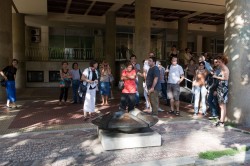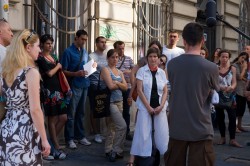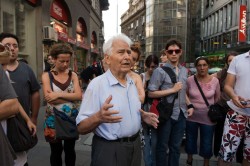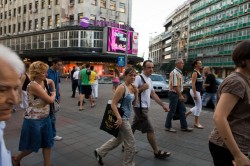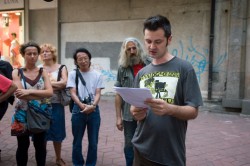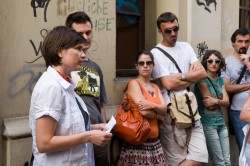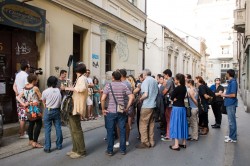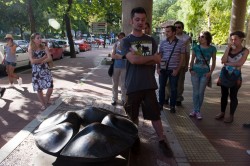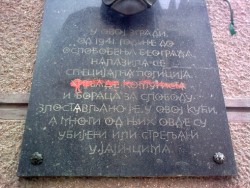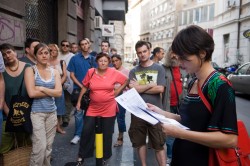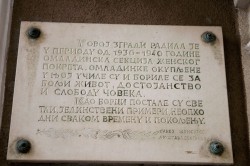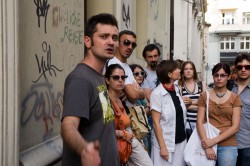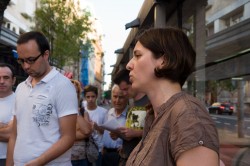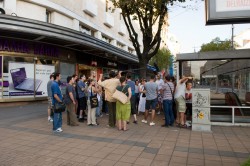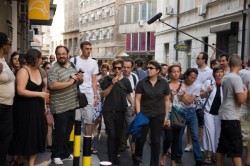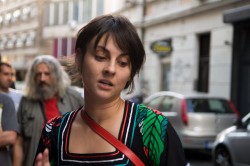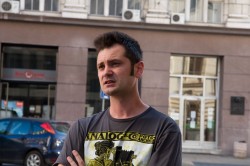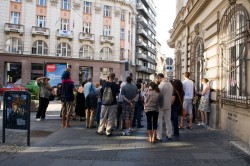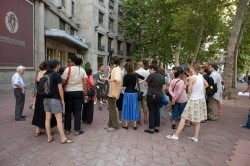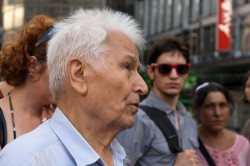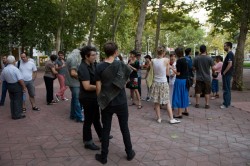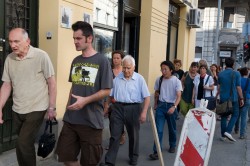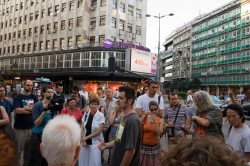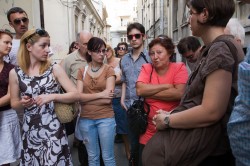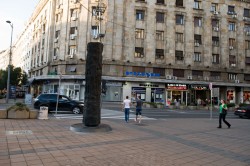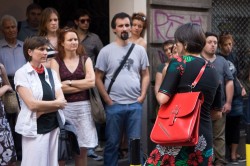Sites of resistance in the center of Belgrade
A public walk on the trail of the Resistance Movement covering the route from the Faculty of Sciences (PMF) to Nicola Pasić Square, 13 August 2011
The group that prepared the guided tour and the invited speakers will be showing a number of historical sites of suffering and resistance against the fascist occupation and the local collaborationists in Belgrade city centre. Starting from the place where the building of the former Belgrade Municipal Police Department (whose Fourth Department was to become Special Police) used to stand, in the vicinity of today's PMF, the tour will cover 7. jula, Cara Lazara, Obilićev Venac and Kolarčeva streets, crossing to Terazije Square and ending at Marx and Engels Square.
The topics will include the pre-war history of the anti-fascist movement and the structure of SKOJ (Communist Youth League of Yugoslavia), their activities and acts of sabotage. Mića Petrović, member of the Partisan movement will be sharing his memories of the 1940s, among which the hiding of Jews during the occupation, the resistance of the women's movement, women's demands and their joining armed resistance.
A reminder:
Throughout the 42 months of the occupation (from 12 April 1941 until 20 October 1944), Belgrade, as the centre of the administration of the occupying forces and the collaborationist authorities, suffered their cruelty. It is estimated that around 15,000 residents of the capital were killed during this period in a variety of ways. The total number of people who lost their lives as a result of the fascist terror during the Second World War has not yet been precisely determined. The people living in Belgrade contributed to the organized fight against fascism in extraordinary ways, in the circumstances that were incomparably more difficult than those in the free territories controlled by the members of the Partisan movement. The majority of members of the resistance movement, namely, the National Liberation Movement led by the Communist Party died fighting against fascism.
A series of guided tours of the places in Belgrade and the surrounding area related to the history of the Sajmište Nazi concentration camp will be organized from July until December 2011, as part of the project A Visit To Staro Sajmište - Criteria and Standards of Remembrance. The visits take the form of guided tours focusing on developing an understanding of the elements of past fascist ideologies and analysing the appearance of fascism in the contemporary society. The guides are men and women who have become familiar with the locations/topics through their work, research or experience. The aim of these activities is to develop a practice of remembrance that links the past to present day experiences allowing to spot racism, nationalism and other chauvinistic relations in the society that are based on exploitation and discrimination.
Head of the working group: Ana Vilenica
Idea and coordination of organized visits: Rena Raedle
Guides: Milan Radanović, Mića Petrović,Tanja Marković, Rena Redle and Ana Vilenica
Organized and produced by Cultural Centre REX/ B92 Fund
Carried out with the support of the Rosa Luxemburg foundation (Rosa Luxemburg Stiftung Southeast Europe)
